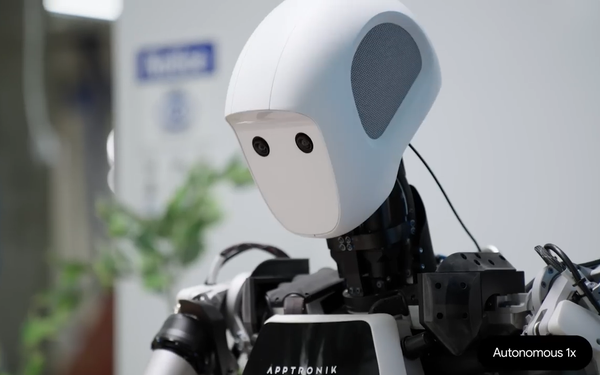
Google DeepMind on Thursday unveiled
two new artificial intelligence (AI) models that think before taking action. At least one former Google executive believes everything will tie into internet search in the future.
Gemini
Robotics 1.5, a vision model, thinks and sees before acting. The Gemini Robotics-ER 1.5 model will allow robots to think, plan and make logical decisions inside their physical environments.
The Gemini Robotics-ER 1.5 model, also a vision-action-language (VAL) model, can make decisions based on the physical world. It can call on digital tools and create detailed, multi-step plans to
complete a mission.
Carolina Parada, a senior engineering manager at Google AI, in a blog post described how robots based on these models will use the internet to perform certain tasks,
while Alphabet CEO Sundar Pichai demonstrated in a video on an X post how the models will help robots transfer learning from one robot to another.
advertisement
advertisement
“New Gemini Robotics 1.5 models will
enable robots to better reason, plan ahead, use digital tools like Search, and transfer learning from one kind of robot to another,” Pichai wrote in the X post.
In the video posted to X, Apollo, the robot, sorted laundry with light colors in the white bin and dark colors in the black bin. It recognized
not only a black shirt and a red shirt as being a dark color. The video’s narrator moved the bins seemingly to confuse the robot, but it understood the differences in the color bins and that
they had moved.
The video shows two cameras for eyes on the robot. It also shows how the robot’s thoughts and actions are combined. It has perception and can make inferences, such
as moving a dark-colored bin to pick up a cloth lying next to it. It also can pack similar objects in the same bag.
Robotics could use AI search to identify objects, plan actions and navigate
environments. In addition, it could use search to understand context, make decisions, and adapt to certain situations in real-time.
AI adoption rates by humans have
skyrocketed, reaching approximately 30% in three key markets: 28% in the U.K., 26% in the U.S. and 37% in Australia, according to LoopMe.
The data reflects similar growth patterns to the early
rise of Google search and Apple’s iPhone, which both gained sizable market share only five years after launch — reaching 44% and 25% respectively, according to the report
released today.
In all three countries, LoopMe found that younger generations are the most receptive to AI, which is not surprising. Use
jumps to 31% among 18– to-34-year-olds in the U.S., and 38% in the U.K., but Australia leads with 43%.
All three markets cited the use of AI to enhance search. Nearly a quarter of
respondents in Australia highlighted this, while in the U.K. and U.S., it accounted for 27%.
The ability to improve productivity at work ranks as the second-highest reason for AI use, with 21%
in Australia, 19% in the U.K., and 17% in the U.S. While the ability of AI to create content and rapidly summarize reports is recognized, these rank lower as reasons for use.

